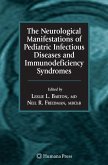The number of patients affected by and dying from what can be considered as a "biofilm disease" is higher than heart disease and cancer combined. Thus, this is a hugely important work that describes the molecular mechanisms of cell-to-cell communication among bacterial cells in a biofilm, the development of antibiofilm inhibitors such as quorum-sensing inhibitors, and the use of biofilm inhibitors to prevent and treat bacterial infections in humans and other animals.
In the well-watered groves of academe, most of us are content to gather worshipful students and technicians in a shady nook to contemplate the eternal verities and to plan extravagant feasts to celebrate our contributions to "knowledge" and to the gradual improvement of the human condition. As one convocation follows another, and as our funding agencies pump billions of dollars into incremental research that ?lls every possible pigeon-hole in which a gene makes a protein, a small number of intellectual athletes seize a pivotal concept and plunge into the real world. It is this small band of nimble and impossibly brave intellectual halfbackswho win gamesin the real world, and this book is the result of the drive and intellectual athleticism of its editor and several of her contributors. Bacteria affect humans more than any other life forms with which we share the blue planet, but our understandingof these invisible companionshas developed in a staggering pattern, crippled by our panic and consequent shifts of emphasis. When our race was threatened by epidemic diseases, we visualized bacteria as swarms of potentially lethal planktoniccells from which we must remain isolated by sanitation and which we had to kill by immunization and chemical antibacterial compounds. By the time this overriding threat had been obviated, we began to examine na- ral and pathogenic ecosystems by direct methods, and we were surprised to ?nd that planktonic bacteria are comparatively rare and that most prokaryotes grow in matrix-enclosedbio?lms.
In the well-watered groves of academe, most of us are content to gather worshipful students and technicians in a shady nook to contemplate the eternal verities and to plan extravagant feasts to celebrate our contributions to "knowledge" and to the gradual improvement of the human condition. As one convocation follows another, and as our funding agencies pump billions of dollars into incremental research that ?lls every possible pigeon-hole in which a gene makes a protein, a small number of intellectual athletes seize a pivotal concept and plunge into the real world. It is this small band of nimble and impossibly brave intellectual halfbackswho win gamesin the real world, and this book is the result of the drive and intellectual athleticism of its editor and several of her contributors. Bacteria affect humans more than any other life forms with which we share the blue planet, but our understandingof these invisible companionshas developed in a staggering pattern, crippled by our panic and consequent shifts of emphasis. When our race was threatened by epidemic diseases, we visualized bacteria as swarms of potentially lethal planktoniccells from which we must remain isolated by sanitation and which we had to kill by immunization and chemical antibacterial compounds. By the time this overriding threat had been obviated, we began to examine na- ral and pathogenic ecosystems by direct methods, and we were surprised to ?nd that planktonic bacteria are comparatively rare and that most prokaryotes grow in matrix-enclosedbio?lms.








